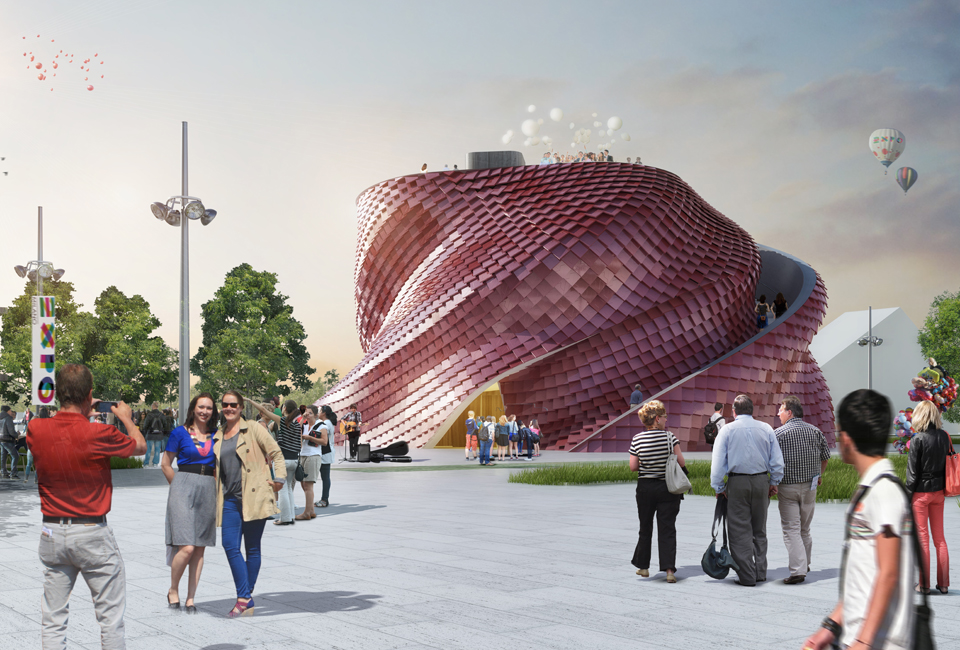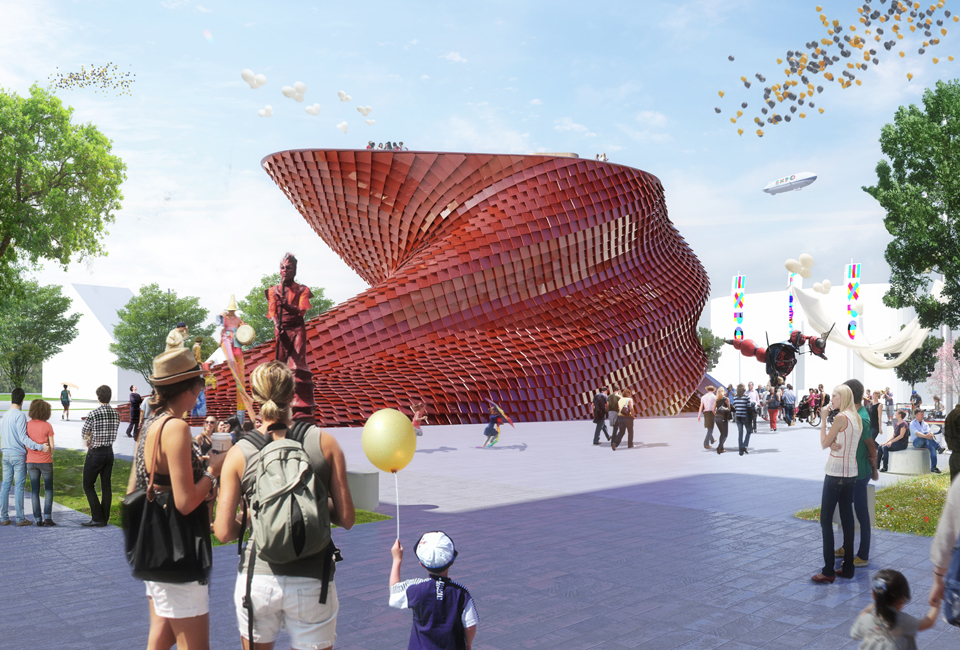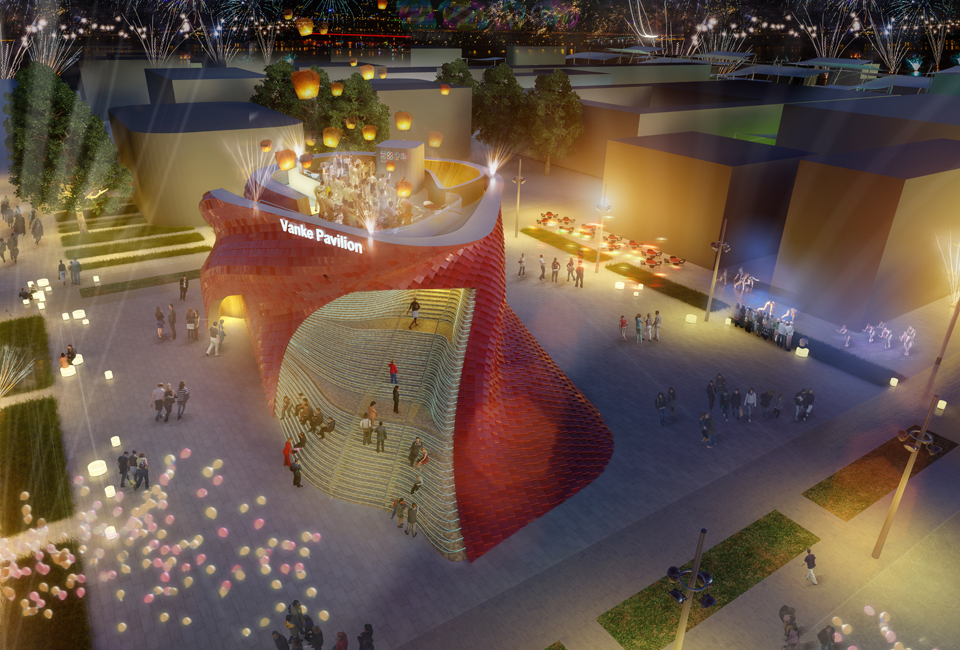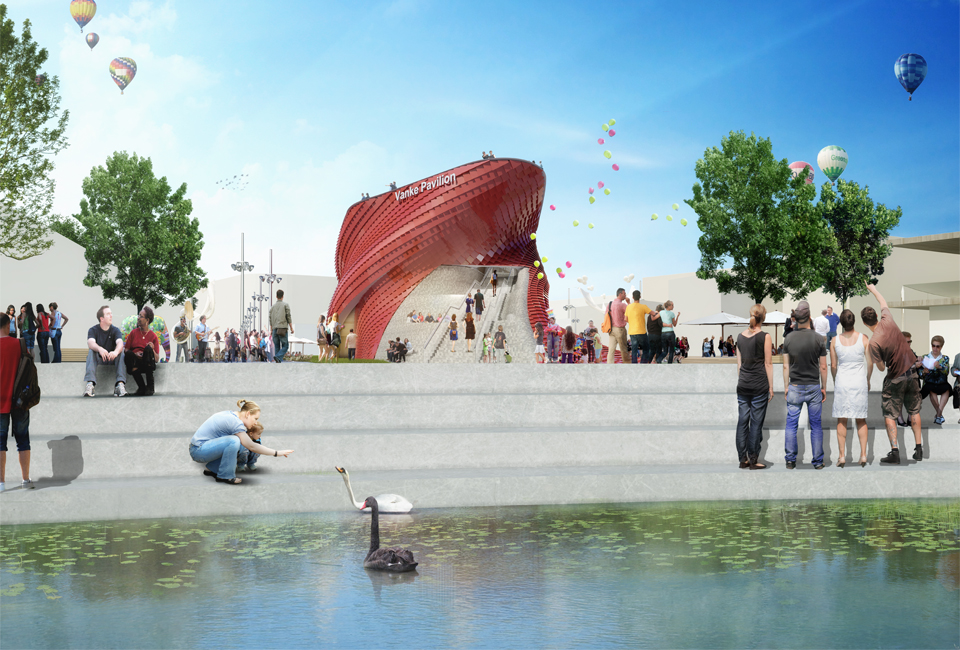The Vanke Pavilion for Milan Expo 2015 has been designed by world-renowned architect Daniel Libeskind, the pavilion will explore key issues related to the Expo theme of “Feeding the Planet” by reimagining a traditional Chinese Shitang (dining hall). The interior exhibition design is lead by Ralph Appelbaum and graphic design by Han Jiaying.
“The staggering rate of the cities’ growth does in fact put us in the condition of having to face the risk of social disintegration, where the principal of solidarity slowly fades away and individuals, prey to anonymity, survive in a crescendo of solitude. This is why Vanke chose “Shitang” as the theme for its pavilion, a traditional Chinese social structure that lives on today in contemporary society under various forms, representing a possibility to socialize in a healthy, tranquil environment,” said Wang Shi, the Vanke chairman.
The concept for the pavilion was inspired by traditional Chinese landscape painting—rock formations, rice fields, and prehistoric outcrops. The pavilion aims to tell the story of civilization, technology and the 21st Century as well as offer a space for reflection and celebration of different cultures.
“For the Vanke Pavilion, I wanted to create a jewel—a place where people could gather, explore and experience something very Chinese and modern,” said Daniel Libeskind. “I drew from a spectrum of sources for the design—from the ancient writings of Confucius and Lao Zi to works from the Renaissance—with the goal of creating connections between many cultures,” adds Libeskind.
Situated on the edge of the Lake Arena, 1000-square meter pavilion appears to rise from the east forming a dynamic vertical landscape. The design features a sinuous geometrical pattern that flows between inside and outside. The red serpentine form carves an opening up the middle to a grand staircase clad in a white mosaic tile. A roof-top observation desk will provide stunning views of the lake and near-by Italian pavilion. The pavilion is clad in an innovative three-dimensional red metalized tile that Libeskind designed with the Italian company Casalgrande Padana, the geometric ceramic panels not only create an expressive pattern, but they possess highly sustainable self-cleaning and air purification properties.
Inside visitors encounter a constellation of more than 300 screens mounted on a matrix of bamboo armatures. Short films weave throughout the series of screens capturing a glimpse into the everyday life of ordinary Chinese citizens expressing the importance of the Shitang in their daily lives.























